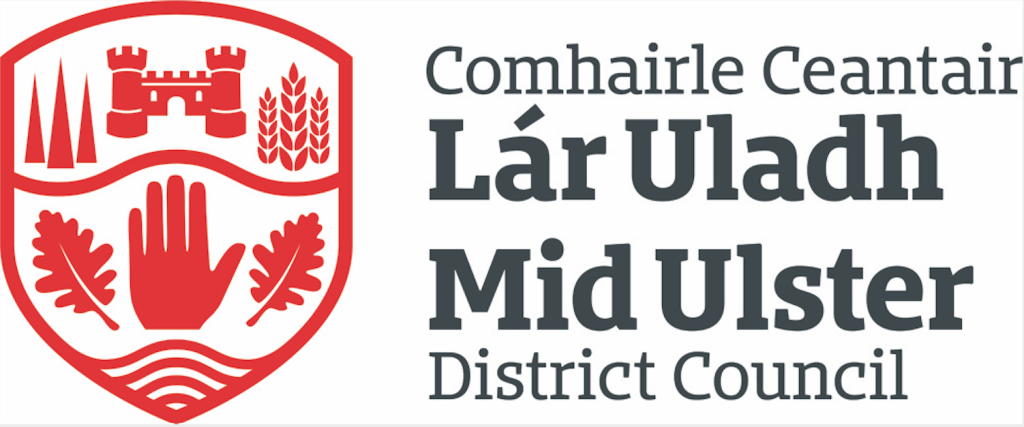Almost 4,000 people are buried in the area known as the ‘Barley Field’, which lies to the rear of the former Dungannon Workhouse. The vast majority of these were buried there during the Great Famine, when in 1847 and 1849 cholera and typhus stalked the walls of the workhouse.In the register of deaths for Dungannon workhouse, 1842-1900, more than 180 different causes of death are listed for those who were termed ‘inmates’-residents of the workhouse. Many of these illnesses are today curable and indeed non-life threatening and included bronchitis, diarrhoea and influenza. The deaths ranged in age from little Mary Hughes of Minterburn who only survived an hour after birth in 1887 to 108-year-old Anne Oberry of Dungannon who died there in 1891. These are just two of the many ‘human’ stories which the Dungannon Workhouse project aims to tell by adding names and details to the lives of thousands of people who passed through its doors. The Dungannon Workhouse was opened in May 1842 and its first residents arrived on 23rd June the same year. The building was built to serve up to 800 people but during the period of the Great Famine (1847-1850) it catered for twice that number. The first death was recorded on 12th August 1842 and between then and the middle of the 20th century almost 4,000 people were buried there. The old Workhouse was finally pulled down in 1978 and all that remains of it is the date stone that was over the entrance, and which is still on display today inside the South Tyrone Hospital. Recently, a memorial garden was created by The Southern Trust, in partnership with Donaghmore Historical Society’, as a lasting tribute to all those men, women and children who are buried on the site and includes a special engraved stone in their memory. However, no headstones or markers have ever provided the names of those who died in Dungannon Workhouse, often buried in the ‘Barley Field’ with only a handful of people present- even less during the Great Famine. This website, for the first time, names these people and provides a voice to their experiences, allowing us to remember the terrible times that people endured in 19th century Ireland and later. It also allows us to understand how the workhouse – the most feared public building in the 19th century- operated. People feared the workhouse as entry to it meant that their chances of leaving it were slim. Developed by Donaghmore Historical Society, the website will also act as an educational tool ensuring that present and future generations fully understand the plight of our ancestors.
of Mid Ulster Council to whom we are grateful.
This website aims to shed light on some of the personal stories of those who lived and died in Dungannon workhouse. Among those who perished in Dungannon workhouse were the McLenaghy family from Dungannon. Three members of the family aged 37, 3 and 9 months entered the workhouse in August 1860 and within four months were all dead succumbing to a variety of diseases and illnesses. The McGoldricks of Clonaneese, aged four and four months, died within days of each other in 1862 from marasmus. It was the same with the Hamilton children from Drumaspil, Thomas (6), David (4), and Sarah (1) all dying within a six-week period in the summer of 1863.
The experiences of people like the McLenaghy, McGoldrick and Hamilton families are shared within the pages of this website so that we can understand life in an Irish workhouse in the 19th & 20th centuries. And remember them.
The Dungannon Workhouse project aims to document the experiences of those who lived and died here during the Great Famine.
Founded in 1983, Donaghmore
Historical Society meets regularly to share, preserve and document the history of Donaghmore and the surrounding area in Co Tyrone.
Townland Research facilities, archives and personal guidance from members who have a wealth of experience are available at the Donaghmore Heritage Centre (a converted National School built 1885).
Here, we offer a place for researchers and interested parties to take a step back in time through their collection of photographs, old school roll books, land registration ledgers, documents and artifacts of local interest including townland maps.
This project was made possible by the generous assistance of Mid Ulster Council to whom we are grateful. This project has been supported by The Executive Office through the District Council Good Relations Funding programme and administered by Mid Ulster District Council.



| Cookie | Duration | Description |
|---|---|---|
| cookielawinfo-checkbox-analytics | 11 months | This cookie is set by GDPR Cookie Consent plugin. The cookie is used to store the user consent for the cookies in the category "Analytics". |
| cookielawinfo-checkbox-functional | 11 months | The cookie is set by GDPR cookie consent to record the user consent for the cookies in the category "Functional". |
| cookielawinfo-checkbox-necessary | 11 months | This cookie is set by GDPR Cookie Consent plugin. The cookies is used to store the user consent for the cookies in the category "Necessary". |
| cookielawinfo-checkbox-others | 11 months | This cookie is set by GDPR Cookie Consent plugin. The cookie is used to store the user consent for the cookies in the category "Other. |
| cookielawinfo-checkbox-performance | 11 months | This cookie is set by GDPR Cookie Consent plugin. The cookie is used to store the user consent for the cookies in the category "Performance". |
| viewed_cookie_policy | 11 months | The cookie is set by the GDPR Cookie Consent plugin and is used to store whether or not user has consented to the use of cookies. It does not store any personal data. |